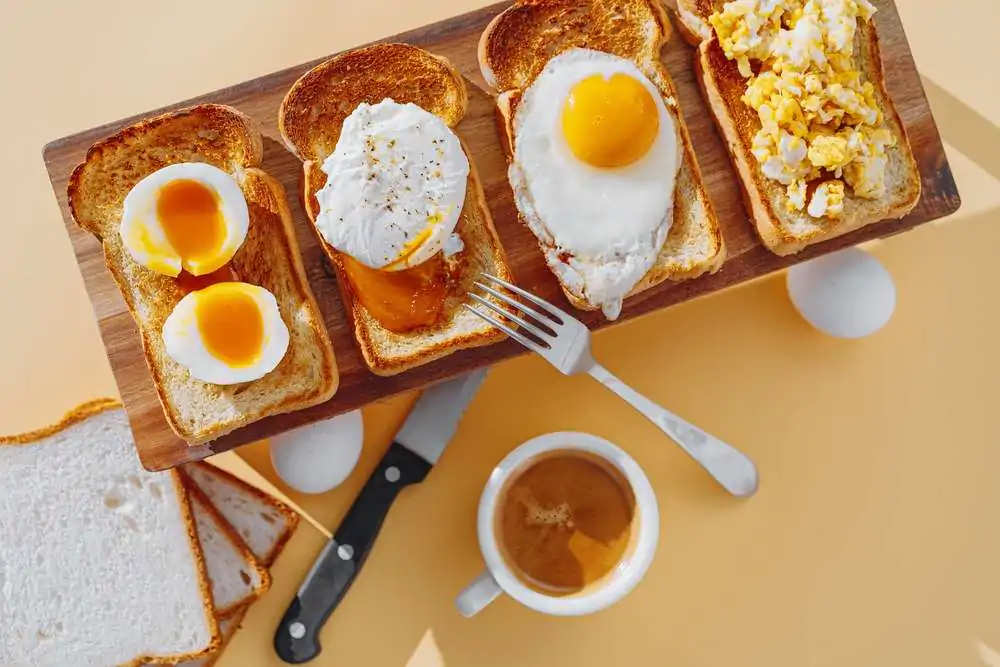If you like your java smooth and mellow, there’s a surprising ingredient to help achieve this. With our Swedish egg coffee recipe, you’ll never have bitter Joe again.

If you’re hoping to try coffee from all around the world, then our Swedish egg coffee recipe will tickle your fancy. After all, in 2021 it was revealed that around 67.4 thousand metric tons of coffee is consumed by the Swedes per year, so we can trust they know a thing or two about java.
While, you might think it sounds strange, adding eggshells to coffee is actually nothing new – it’s an old trick to make the brew more mellow and smooth. Eggs and coffee are surprisingly common, as other beverages that make use of this ingredient include cà phê trứng, which is Vietnamese egg coffee.
While you’re here, check out our article on eggshells in coffee to learn the benefits of making this drink. Now, let’s dive in.
What Is Swedish Egg Coffee?
At first thought, you might think this beverage is coffee mixed with an egg. That’s only partly true. In this instance, an egg, along with a crushed eggshell, is added to the coffee grounds during the brewing process.
Although this might sound unappealing, eggshells contain calcium carbonate. This compound is considered an antacid, meaning it helps neutralize acid from the coffee.
As for the egg whites, they remove impurities from your drink, leaving you with a smooth and mellow cup of java. The magic lies in protein molecules, which bind to cellular material, tannins, and other compounds that cause bitter flavor. This is the same reason that egg whites are often used when making wine.
Eggs also help to filter the grounds, by clumping them together during the brewing process. Then, cold water is added so the grounds settle to the bottom of the pot. That way, you get a clean cup of coffee.
What Does Swedish Egg Coffee Taste Like?
I’m sure that egg coffee sounds weird to anyone who hasn’t tried it before. It’s no surprise, given that these two ingredients taste nothing alike. But surprisingly, egg coffee is pretty good.
Just like eggs enhance the richness of any dessert, they also do the same for coffee. Thanks to the egg whites, Swedish egg coffee is creamy and smooth. The drink is so velvety, you don’t even need to add milk to it.
Although you might worry the coffee will taste “eggy,” since the egg is not cooked, the whites have almost no taste while the yolks are buttery.
The “original” Swedish egg coffee includes crushed eggshells, which reduces the acidity. But if you like your java crisp, then you can omit the eggshells. Check out our article on acidic vs bitter coffee to learn the differences between the two.
Since the egg binds to the grounds, there’s no need for a paper filter. As a result, all the coffee oils end up in your cup, creating a rich brew with a thicker mouthfeel.
History Of Swedish Egg Coffee

Given the pretty straightforward name, you’d think that this drink is how Swedes like their coffee. However, the truth couldn’t be far from it. The concept of egg coffee is not very familiar to Northern Europeans, at least in contemporary settings.
During the 18th century, coffee was scarce, so Swedish farmers in rural areas would reuse the same grounds several times. To avoid getting a murky drink, they would add different substances to clarify the brew, including eggs and even, fish skins.
It wasn’t long before the Swedes moved onto more refined ways of filtering coffee – at least for those situated in Scandinavia. Those who immigrated to the United States during that time did bring that odd filtration method with them.
The Swedish immigrants settled in the Midwest, mainly in the states of Nebraska, Minnesota, and Wisconsin. They continued to practice adding an egg to coffee as a part of their identity. Today, this drink is known as church basement coffee, as it’s commonly served for large groups attending a Sunday service.
How To Make Swedish Egg Coffee Recipe
What makes Swedish egg coffee so great for large groups of people, such as church gatherings, is the fact that can be brewed in big batches.
When preparing large batches of coffee at once, it takes a long time for all the water to pass through the grounds. Almost inevitably, the brew becomes overly-extracted and bitter. That’s not the problem with Swedish egg coffee, thanks to the magical ingredient – the mighty egg.
Keep in mind that, the longer you let the coffee simmer, the stronger your brew will be. Since the egg whites remove all those compounds that make coffee bitter, you don’t have to worry about getting a pungent drink.
Swedish Egg Coffee Recipe
Equipment
- Small bowl
- Spoon
- Pot
- Mug
Ingredients
- 3 tbsp coffee
- 10 oz water
- 3 oz cold water
- 1 pasteurized egg
Instructions
- Add water to a pot, leaving a quarter of a cup of water aside. Bring the water in the pot to a boil.
- Grind your coffee. Ideally, the coffee should have the same consistency as French press coffee, which is coarse. Medium to dark roast beans work best.
- Crack your egg into a bowl. Crush the shell with your hands and add it in.
- Then add your ground coffee and the water you set aside earlier.
- Once the water on the stove starts boiling, lower the heat, and add the mixture to the pot. Let it simmer for about three minutes.
- Once the coffee grounds begin to bind together and float to the surface, remove the pot from the stove.
- Add one cup of cold water to the pot and let it sit for about 10 minutes. Doing this will make the grounds settle at the bottom of the pot, allowing you to pour a clean drink.
- Optionally, filter the drink with a strainer or pour it into a French press and serve as normal.
- Pour the coffee into a mug and serve. Add milk, creamer, or sweetener as desired.
Nutritional Information

Coffee has practically no calories, but when you add egg to the table (or rather, in your drink), the numbers will slightly increase.
One egg has around 72 calories. This isn’t much, especially compared to mochas or frappuccinos, but it is nice to treat yourself sometimes. Plus, there is some nutritional value as eggs are a source of protein and calcium.
Since raw and lightly cooked eggs pose a risk of foodborne illnesses, such as salmonella, it’s recommended to make this brew with pasteurized eggs. The hot water used to make Swedish egg coffee may not be enough to eliminate the possible exposure to pathogens so it’s best to stay on the safe side.
